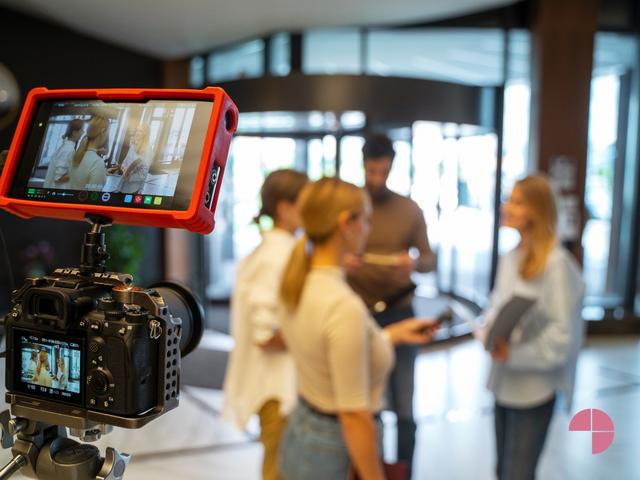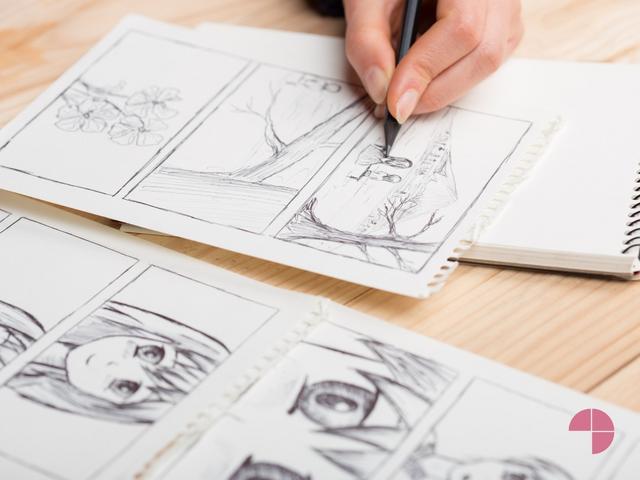For over a century, animation has been capturing the imagination of viewers and today, it seems, it has no intention of slowing down. Children are mesmerised by the colourful worlds of fascinating creatures, and grown ups are equally as enthralled as we watch in awe while pictures come to life and fantasy becomes reality. But it is not magic that animates images, it is the skill and talent of human beings. When Disney animators Ollie Johnston and Frank Thomas released their 1981 book, "The Illusion of Life: Disney Animation”, they pulled back the curtain on some of the fundamental principles of animation. Let’s take a look.

Squash & stretch
When characters are active, their movement needs to be believable. This involves weight and volume. They won’t just go directly from A to B, there must be an illusion of movement. By squashing and stretching a character, they become fluid and flexible making them appear more life-like. But remember, the volume doesn’t change; it merely distorts.
Anticipation
Just like a tennis player swinging back before they serve, an animated character needs to create anticipation before action. This principle helps to create interesting moments in even the smallest of movements.
Staging
Staging is as important in animation as it is in theatre or live action film. Whether it’s an action, a mood, or a reaction, context is needed. This can significantly affect the audience's emotional response.
Straight ahead action V. pose to pose
Straight ahead action is when the character is drawn from point 1 to the end in a sequence. Pose to pose is a more intricate method where the beginning and end poses are drawn but key moments are then added in between. Pose to pose is more fluid and freeform and can create interesting movement and pace.

Follow through and overlapping action
Both follow through and overlapping action can add realism and depth to movement. Follow through is when a character or item is in motion and then stops, some parts of the character will continue to move, such as hair or fabrics. Overlapping action shows how different parts of a character move at different rates. These principles add a natural rhythm to your animation.
Slow in & slow out
This principle refers to the pacing of the action. Movement starts slowly, speeds up, and then slows down again before coming to a complete stop. This mimics the natural motion of objects which creates realism.
Arcs
In general, if an object is thrown or fired, it will move in an arc trajectory so the arc principle is a reflection of the laws of gravity and again, creates a sense of realism.
Secondary action
Secondary actions are additional movements to enrich the entire animation and to enhance the main action. Not to be mistaken for follow-through, secondary action can be small movements such as a character blinking or adjusting their glasses. Any small gesture or movement can add another dimension to a piece of animation.
Timing
Timing is a skill that can make or break the entire ambiance of any story, either animated or otherwise. In the context of animation, timing (also known as spacing) refers to the number of frames between each movement. This will dictate the mood, response and emotion of a character.

Exaggeration
The beauty of animation is that enormous levels of exaggeration are generally an acceptable and oftentimes, enjoyable element of a story. Reality can be reduced or inflated and there is no limit to how far you can take it. Exaggeration can be fun or it can be great drama.
Solid drawing
Drawing without solidity is a flat and potentially uninteresting image but solid drawing is that third dimension that can bring a character or object to life. This principle emphasises the importance of weight, volume, and anatomy in creating believable characters and objects.
Appeal
While it may seem obvious, it must be noted that animation that is not appealing, simply won’t engage an audience. Characters need to have identifiable traits regardless of their likeability. Appeal in animation is akin to charisma in a real world person.
Animation is an artform and it is a communication tool. It has enormous potential and has become more and more sophisticated as time and technology have evolved. For artists, there will always be the freedom to do whatever they want with their medium, but if you wish to create engaging, watchable animation, these principles are a powerful tool in your arsenal.
Whether you're animating for film, television, or digital platforms, it is wise to learn from past masters before making or breaking your own rules. After all, the ultimate goal is to tell a story, so why not use a tried and tested formula?
Digital media design courses
If you are intrigued by animation and want to apply your skills to Digital Media Design, you’ve come to the right place.
Led by professionals at the forefront of digital innovation, our curriculum covers everything from the foundational principles of design to the latest trends in digital technology. With a blend of theoretical knowledge and hands-on projects, we ensure that you not only understand the concepts but also apply them in real-world scenarios. By enrolling in one of our digital media design courses, you can expect more than a great education, you will also be stepping into a community of like-minded creatives. Enrol now and take the first step on your journey to a fascinating career in digital media design.


